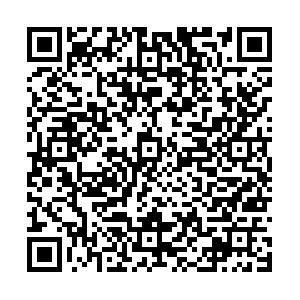|
孙智勇,孙小端,荣建. 高速公路施工区上游过渡区的车辆汇入模型[J]. 北方工业大学学报,2013,39(4): 594-598. SUN Zhiyong, SUN Xiaoduan, RONG Jian. Merging model of vehicles on upstream transition area of expressway work zones[J]. Journal of Beijing University of Technology, 2013, 39(4): 594-598.
|
|
付蓬勃,吕永波,林琳,等. 高速公路意外事件所致堵塞的消散策略研究[J]. 北京理工大学学报,2010,30(9): 1051-1055. FU Pengbo, LV Yongbo, LIN Lin, et al. Study of the control measures for traffic jam caused by accidents on expressway[J]. Transactions of Beijing Institute of Technology, 2010, 30(9): 1051-1055.
|
|
杨庆芳,马明辉,梁士栋,等. 高速公路瓶颈区域可变限速阶梯控制方法[J]. 西南交通大学学报,2015,50(2): 354-360. YANG Qingfang, MA Minghui, LIANG Shidong, et al. Stair-like control strategies of variable speed limit for bottleneck regions on freeway[J]. Journal of Southwest Jiaotong University, 2015, 50(2): 354-360.
|
|
张海军,张珏,杨晓光. 异常事件下高速道路交通状态的分析与仿真[J]. 交通运输工程学报,2008,8(2): 117-121. ZHANG Haijun, ZHANG Yu, YANG Xiaoguang. Analysis and simulation of traffic state on expressway during incident[J]. Journal of Traffic and Transportation Engineering, 2008, 8(2): 117-121.
|
|
NAGEL K, SCHRECKENBERG M. A cellular automaton model for freeway traffic[J]. Journal de Physique I, 1992, 2(12): 2221-2229.
|
|
TAKAYASU M, TAKAYASU H. 1/f noise in a traffic model[J]. Fractals, 1993, 1(4): 860-866.
|
|
LI Xiaobai, WU Qingsong, JIANG Rui. Cellular automaton model considering the velocity effect of a car on the successive car[J]. Physical Review E, 2001, 64(6): 066128.
|
|
FUKUI M, ISHIBASHI Y. Traffic flow in 1d cellular automata model including cars moving with high speed[J]. Journal of the Physical Society of Japan, 1996, 65(1): 1868-1870.
|
|
NAGEL K, WOLF D E, WAGNER P, et al. Two-lane traffic rules for cellular automata: a systematic approach[J]. Physical Review E, 1998, 58(2): 1425-1437.
|
|
CHOWDHURY D, WOLF DE, SCHRECKENBERG M. Particle hopping models for two-lane traffic with two kinds of vehicles: Effects of lane-changing rules[J]. Physica A: Statistical Mechanics and Its Applications, 1997, 235(3/4): 417-439.
|
|
郑容森,谭惠丽,孔令江,等. 双车道多速车辆混合交通流元胞自动机模型的研究[J]. 物理学报,2005,54(8): 3516-3522. ZHENG Rongsen, TAN Huili, KONG Lingjiang, et al. A cellular automaton model for mixing traffic in two-lane system[J]. Acta Physica Sinica, 2005, 54(8): 3516-3522.
|
|
王永明,周磊山,吕永波. 基于元胞自动机交通流模型的车辆换道规则[J]. 中国公路学报,2008,21(1): 89-93. WANG Yongming, ZHOU Leishan, LV Yongbo. Lane changing rules based on cellular automaton traffic flow model[J]. China Journal of Highway and Transport, 2008, 21(1): 89-93.
|
|
唐夕茹,陈艳艳. 基于改进型元胞自动机模型的双车道公路交通特征分析[J]. 北京工业大学学报,2014,40(1): 1-10. TANG Xiru, CHEN Yanyan. Traffic characteristic analysis of two-lane highway under the improved ca model[J]. Journal of Beijing University of Technology, 2014, 40(1): 1-10.
|
|
BIHAM O, MIDDLETON A A, LEVINE D. Self-organization and a dynamical transition in traffic flow models[J]. Physical Review A, 1992, 46(10): 6124-6127.
|
|
盛鹏,赵树龙,王俊峰,等. 基于元胞自动机模型的道路突发瓶颈现象研究[J]. 物理学报,2010,59(6): 3831-3840. SHENG Peng, ZHAO Shulong, WANG Junfeng, et al. Study of temporary traffic bottleneck based on cellular automaton model[J]. Acta Physica Sinica, 2010, 59(6): 3831-3840.
|
|
钱勇生,曾俊伟,杜加伟,等. 考虑意外事件对交通流影响的元胞自动机交通流模型[J]. 物理学报,2011,60(6): 103-112. QIAN Yongsheng, ZENG Junwei, DU Jiawei,et al. Cellular automaton traffic flow model considering influence of accidents[J]. Acta Physica Sinica, 2011, 60(6): 103-112.
|
|
赵康嘉,陈淑燕. 基于元胞自动机的交通事件交通流仿真模型[J]. 公路交通科技,2014,31(3): 133-138. ZHAO Kangjia, CHEN Shuyan. Cellular automaton based traffic flow simulation model for traffic incidents[J]. Journal of Highway and Transportation Research and Development, 2014, 31(3): 133-138.
|
|
李庆定,董力耘,戴世强. 公交车停靠诱发交通瓶颈的元胞自动机模拟[J]. 物理学报,2009,58(11): 7584-7590. LI Qingding, DONG Liyun, DAI Shiqiang. Investigation on traffic bottleneck induce by bus stopping with a two-lane cellular automaton model[J]. Acta Physica Sinica, 2009, 58(11): 7584-7590.
|
|
孙德强,刘伟铭. 自动发卡条件下公路收费车道的通行能力[J]. 公路交通科技,2013,30(8): 129-133. SUN Deqiang, LIU Weiming. Capacity of highway tollgates under automatic card sender condition[J]. Journal of Highway and Transportation Research and Development, 2013, 30(8): 129-133.
|

 点击查看大图
点击查看大图





 下载:
下载: